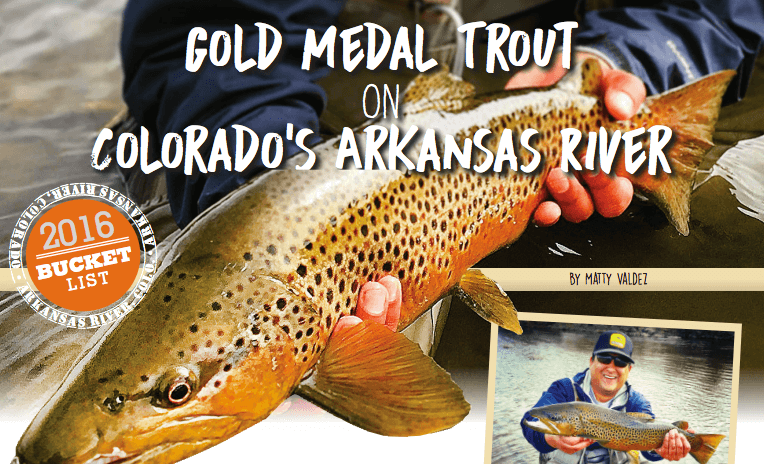Gold Medal is a designation bestowed by the Colorado Wildlife Commission on the state’s best trout waters. Finding a slice of elbow room on Gold Medal water can be as good as it gets. This on its own can be a little tricky, as there is definitely no shortage of pros and beginners alike searching for Gold Medal trout. Perhaps the best bet for catching a multitude of large Gold Medal trout in Colorado is on the Arkansas River. The Arkansas River of Colorado is 102 miles of designated Gold Medal water stretching from Parkdale, just west of Canon City, all the way to the confluence of the Lake Fork and Arkansas near Leadville. If you value your privacy and solitude while fly fishing, there is no better option in Colorado for fly fishing Gold Medal water than the Arkansas River.
This freestone brings a great diversity of stream gradient, insect activity, and water conditions. What happens in Buena Vista is almost certainly not going to be the case in Cotopaxi. This river is rich in diversity, and with that comes the challenge to the angler, but also the rewards of understanding your environment. To really master this water, it’s first important to understand that this is a freestone river.
Freestone rivers are those created naturally from precipitation in the high-country and are fed by smaller streams and tributaries that all feed into and from the larger river. There is no master dam controlling water flows and temperatures. With this comes a certain volatility to flows and temperatures in the water. You’ll rarely be fishing a stable 250 CFS over a prolonged period of time on these types of water. Rather, you’ll see flows rise and drop on a weekly or even daily basis based on what kind of moisture the feeder streams are pumping in.
So, in a freestone river like the Arkansas, the type of water you are fishing is often the most important factor to a successful day of bringing trout to a net. Because flows can get very high and very fast on the Arkansas River, focus your fishing efforts on the shallow banks and soft pockets of the river. This is a brown trout fishery, and brownies are not typically found in the faster currents in the middle lanes of the river. Brown trout are ambush style predators that lie in the soft pocket water and around the structure and will move into feeding lanes to ambush prey like insects and small baitfish. As mentioned above, the water can really get moving here so it’s important to remember that trout—brownies, rainbows, cutties and brookies alike— do not like to spend more energy than necessary. One can call them lazy by nature, but I prefer to think of trout, especially brown trout, as energy efficient.
Do not get tempted into fishing that far bank that looks oh so fishy; the fast middle current will only leave you with a 1- to 2-second presentation window before your flies are dragged out of there. And go ahead and leave the fast middle lanes of the river alone too, as it’s just too darn fast for trout to hold in. Focus on your side of the river, and fish upstream along the banks and pocket water. It is also very important to know that the riverbed of the Arkansas is not a smooth, flat surface. The gradient of the river, along with the high currents during run-off will move small rocks to large boulders, as well as carry a great deal of sediment downriver to form a varied river bottom in different sections. So your ability to read water—finding slots, shelves and pocket water which hold the highest number of trout—will go a long way in your success to catching these wild trout. Insect selection is important, but it’s not the end all to your success on the Arkansas. Throughout a given day, trout here will eat stonefly nymphs, caddis larva, blue wing olive emergers and midge larva. It’s not uncommon to use a three-fly nymph rig – let’s say a large stonefly nymph as the lead fly, trailed by a caddis larva and then a blue wing olive emerger, with all three patterns bringing trout to the net during the day.
It’s important to remember that these wild brownies are predators first and foremost, so getting your presentation in front of or near them will induce a take. The Arkansas, more so than any other river I have fished, has the most opportunistically feeding trout in its system. Prey on their predatory nature by placing a well-drifted presentation, and you will most certainly have a successful day. As with any river, good observation is your most crucial tool when on the Arkansas, but understanding the environmental conditions upriver, as well as monitoring the many tributary influxes into the river and knowing the previous and current weather patterns are all important in helping you master this wild river.
